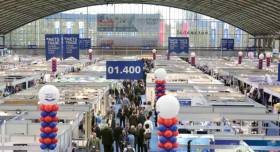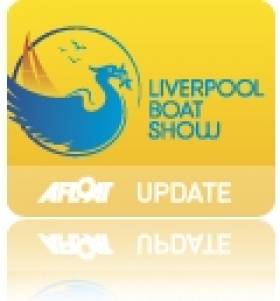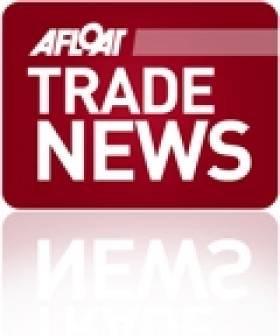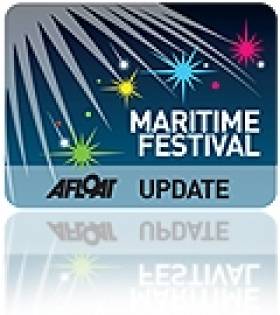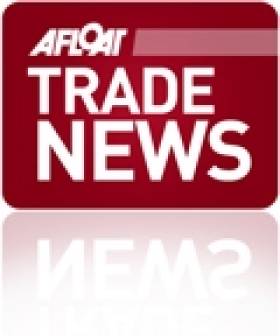Displaying items by tag: boat show
METSTRADE Show Attracts Record-Breaking International Audience
The annual METSTRADE Show in Holland has completed a very successful week, reinforcing its reputation as the world’s premier gathering of the leisure marine community. As well as breaking new ground in terms of exhibitor and visitor numbers, the B2B event in RAI Amsterdam convention centre welcomed an exceptional 116 different nationalities, the highest number to date. With some 10,500 visitors coming from outside the Netherlands, six percent more than in 2016, the METSTRADE Show has an unrivalled international character. METSTRADE 2018 will take place from 13 to 15 November.
As the 30th birthday edition of this platform for leisure marine professionals, METSTRADE 2017 was always destined to be a special event. Early indications are that visitor figures were the highest recorded for the three-day event, with 16,307unique visitors (an increase of over 5% compared to 2016) and an overall total of 24,856 visits (also plus 5%). Even more pleasing to the organisers, who are committed to ensuring that the METSTRADE Show remains the essential global meeting place for the leisure marine industry, was that these visitors came from 116 different countries (107 in 2016).
Growth across the board
An impressive 68% of all new visitors came from outside the Netherlands, with the top five visitor countries (after NL) being Italy, the United Kingdom, Germany, France and Spain. Significant growth was seen from Greece, Croatia, Finland, the United States and Ireland. All visitors were welcomed on the show floor by no less than 1552 exhibitors (a rise of 5% compared to last year), whose stands were manned by around 6594 high-end industry professionals. The exhibiting companies were also delighted by the unprecedented international flavour of the event.
“METSTRADE continues to be an important platform for our brand to meet with many of our distributors from around the world, including New Zealand, Canada, South Africa and Singapore,” comments Chris Feibusch, Head of Global Marketing for WesCom Signal and Rescue in the UK. “This was the first time that we have exhibited under our new name following a rebrand last month and it was great to reconnect and discuss business with current and prospective distributors at METSTRADE. We look forward to following these business leads up.”
Atul Gupta, director of the Indian company Multiflex Marine, was equally enthusiastic. “METSTRADE is the Mecca of the marine industry and by far the best show of its kind anywhere in the world. We exhibit at many exhibitions worldwide but nothing beats METSTRADE. Having attended the event over the last eight years we have pretty much built all our international business via the METSTRADE Show.”
Vibrant and innovative
While the facts & figures make good reading for the METSTRADE team, what also matters is the way the show was perceived by all who attended. “This anniversary edition was a success because it was conducted in a vibrant atmosphere where exhibitors and visitors alike enjoyed excellent business,” comments RAI Amsterdam’s Maritime Director Irene Dros. “There was also a great deal of appreciation for the exceptionally high number of new and innovative products on display. The newly introduced E-nnovationLAB added to this, featuring technologies and manufacturers of electric & hybrid marine propulsion systems. The foundations have been laid for a promising showcase which will evolve in the years ahead.”
Future-proof
Another future-oriented theme at METSTRADE 2017 was the way younger people were placed firmly in the spotlight, with the large number in attendance adding to the inspiring mood. The METSTRADE Young Professionals Club lounge was very busy and the first edition of the YPC canal cruise was a great success, with the IBEX Millennials joining the fun.
“We have a clear ambition for METSTRADE to embrace the next generation of both people and technologies,” explains Dros. “To thrive in the future, the marine industry must strengthen partnerships, focus on the latest developments in society, and use the latest propulsion and production methods. We believe in stepping into the world which connects the I-pad & game generation – the vloggers and other young influencers who have an enormous impact on consumer behaviour and their followers’ aspirations for luxury products such as boats.”
UK Boaters 'Surprised To Learn' of Irish Marina Facilities
There's been a big shout out for the Irish Marine Federation (IMF) stand at this week's London Boat Show from UK boaters who have been 'surprised to learn' of the range of sailing club and marina facilities available around the Irish coastline. But there have also been expressions of thanks from Irish visitors to the International Show at Excel who are delighted to see Ireland showcased as a maritime destination.
According to stand executive Ciara Dowling, the biggest surprise among some UK boaters visiting the stand (F046) has been the map of Ireland showing over 60 marina locations. Many visitors, she says, simply had not known of the existence of many Irish marina, jetty and pontoon locations, a situation the Irish Marina Federation are keen to rectify.
UK boater feed back from the show so far indicates the close proximity of Wales to Dublin and Ireland's attractive berthing rates compared with the current high value of Sterling against the Euro could be a factor to entice UK boaters to cruise Ireland and even moor boats here in the longer term.
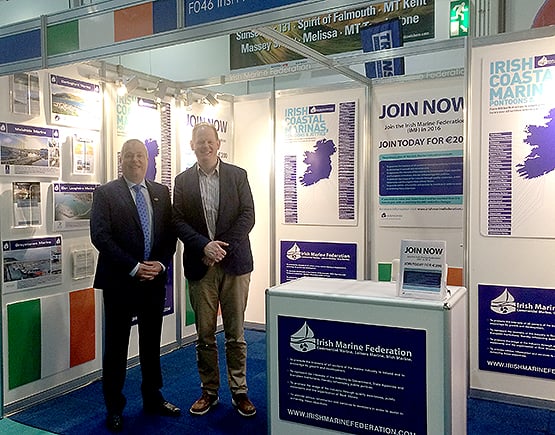
Gerry Salmon of MGM Boats and Paal Janson of Dun Laoghaire on the first ever IMF stand at this week's London Boat Show in Excel.
#liverpoolboatshow – The Northern Boat Show is a festival of boating at the heart of the International Mersey River Festival. This three-day boat show will showcase world class sailing boats, power boats and marine products and services, all set against the backdrop of the Albert Dock.
The latest sailing and power boats will be showcased in Albert Dock and there will be a land-based exhibition on the quayside next to Salthouse Dock. The land-based show will be free to all festival visitors and boat enthusiasts can purchase pontoon tickets to gain exclusive access to the boats on display in Albert Dock.
Location: Liverpool Waterfront, Liverpool L3 4BB. Open 10am to 5pm Fri 5th, Sat 6th & Sun 7th June.
German Boat Show Reaps Reward of Northern Focus
#hanseboot – German boat show hanseboot 2012 focused on Northern European waters and it has proved effective say organisers.
"The increased focus of hanseboot on Northern European waters has produced good results," said Bernd Aufderheide, President and CEO of Hamburg Messe und Congress (HMC) at the close of the 53rd Hamburg International Boat Show on Sunday. "Exhibitors from all segments have confirmed to us that they had noticeably more visitors, especially at the weekends, from Denmark, Sweden and other Northern European countries. In Year one of this new orientation, the overall result after nine days of hanseboot is positive."
Torsten Conradi, President of the German Boat and Ship Building Association (DBSV, one of the official supporters of hanseboot), is convinced that this sharpening of hanseboot's profile is a good thing. "The new orientation of hanseboot in terms of its geographical coverage and content is much appreciated by all. But of course a focusing process like this cannot be completed in just one year. We will work with the experience gained and the suggestions and needs of exhibitors and visitors, continuing the journey we have started with HMC, to optimise the direction of hanseboot even more."
About 80,000 visitors from Germany and abroad came to hanseboot, which was held from 27 October to 4 November. The visitor total was about the same as last year (78,920 in 2011). "This year there was no official In-Water hanseboot in the Port of Hamburg because of extensive construction work going on for protection of the waterway and flood defences. We feel it is a good sign that the number of visitors in the exhibition halls maintained the same level as last year, considering the difficult market situation that still exists," said Aufderheide. "And many exhibitors are confirming to us that hanseboot appeals to the right audience, that is boat owners and watersports enthusiasts with above-average expertise and purchasing power."
According to a representative, independent survey of visitors, the proportion of trade visitors was up 7 percentage points versus last year, reaching 22%. First-time visitors also increased by 5% to 25%.
There was a wide range of attractions to bring newcomers and experienced boating people to the exhibition halls – alongside the numerous boats and yachts of all types and sizes, from new products and classics to sports and cruise boats, series-produced yachts and one-off builds, there were further trends and innovations in the watersports sector, and new features in the supporting programme of specialist presentations and hands-on events.
The new hanseboot Refit arena on the upper floor of event hall B1 was a real crowd puller. Together with A.W. Niemeyer, M. and H. von der Linden and the specialist magazine Yacht und boote, hanseboot looked for old, damaged GRP boats for free-of-charge repair or refit in a showcase building and repair yard during hanseboot. "The traditional reason for going to the hanseboot is that you get so much useful information here. That has certainly worked very well with the Refit arena," said Helge von der Linden. "Visitors were very interested and wanted detailed information, asking very specific questions. The owners of the boats also played a very active part, and learned a great deal."
Whereas the Refit arena was aimed mainly at experienced sailors and boat owners, the Dinghy Newcomers' arena in Hall A4 was particularly appreciated by visitors with little or no previous experience of sailing. Various dinghy models were exhibited on about 200 square metres, and people could try them out on a sailing simulator without getting wet, for example with capsize exercises or trapeze sailing. "We had good discussions with potential customers and also existing customers and collected leads with potential newcomers – that is visitors without experience of sailing, without a sailing license, without their own boat and without charter experience. The Dinghy Newcomers' arena proved very effective," said Christian Brandt from Onsail, which initiated the new action space as a partner of hanseboot.
The focus of hanseboot clearly moved further North as far as exhibitors were concerned, with national pavilions from Estonia, Poland and Finland. The Polar 55 from the Polar Shipyard in Estonia was the largest sailing yacht in the halls with a length of 16.45 metres, attracting a great many visitors. "The Estonian exhibitors had varying expectations for the boat show. Some of them were looking for new dealers, while others already have many years of business relations with Germany. Our boat builders are very satisfied with hanseboot as a whole. Interest was strong, many sales discussions were held, and nearly all our exhibitors took in orders," said Riina Leminsky, Director of the Estonian Business Promotion Enterprise "Estonia in Deutschland".
The DBSV, supporting partner of hanseboot, expressed satisfaction. "hanseboot produced better results than expected, in a difficult economic environment," said DBSV Managing Director Claus-Ehlert Meyer. "The DBSV members at our joint stand had a lot of questions about extensive repair and refitting work. And many contracts were signed for individual building projects. This market segment was also presented by the exceptional yachts at the DBSV special show, which met with a great deal of interest and enormous enthusiasm on the part of visitors."
Quotes from hanseboot exhibitors are shown in the Press Section at www.hanseboot.de
Dates for the next hanseboot and hanseboot ancora boat show 2013:
§ hanseboot 2013, 54th Hamburg International Boat Show, is to be held from 26 October to 3 November 2013.
§ The hanseboot ancora boat show at the ancora marina in Neustadt/Holstein will be held under the leadership of the hanseboot team, from 24 to 26 May 2013.
Boat & Leisure Festival Scrubbed in Cowes
#MARITIME FESTIVALS – Organisers of the 2012 Boat & Leisure Festival 'Cowesfest' have taken the difficult decision to cancel the Jubilee-themed Festival that was scheduled to be held in Cowes Yacht Haven on Monday 4th and Tuesday 5th June.
Spearheaded by the Managing Director, James Brooke, his vision for this two-day Festival was to create a stunning display of British boats and outdoor leisure activities for visitors to see, interact with and enjoy in celebration of the Queen's Diamond Jubilee. Plans were also well underway to incorporate a packed schedule of live music. Sadly, it has not been possible to encourage enough companies to take exhibitor space and participate at the Festival, despite the low cost of doing so in such a high profile venue and over such a special bank holiday. However, Mr Brooke has been astounded by some terrific support shown particularly from local residents and some companies based on the Isle of Wight, and the organising team would like to express sincere thanks for this support.
"We feel that cancelling the Festival now is the responsible decision to take as it would be hugely disappointing for everyone if we produced an event that is anything less than exceptionally good. We pride ourselves on delivering high quality events, and hope that the time and effort that has been put into planning this event can be rewarded at a future date," says Mr Brooke.
He continues, "In order to help protect the future of other events and exhibitions, any companies wishing to exhibit at them really must understand that they will not be able to take advantage of any discounted or free stand space by waiting until the last minute to book! This notion simply undermines the potential success of the entire event and shows little consideration for all the other exhibitors who have been so supportive from an early stage. This culture has become widespread within the marine industry, and we consider it to be a greater threat to the future of exhibitions than the current economic climate."
Any deposits paid are being refunded in full.
Exhibitors Line Up at Swansea Boat Show
More than 140 exhibitors are putting the final touches to their stands today at the South Wales Boat Show in Swansea ahead of curtain-up tomorrow morning. The show opens to the public on Friday at 10am with the official opening ceremony at 11am.
The show features all manner of exhibitor from the trade and leisure sectors. Among the more bizarre exhibitors is Tom McNally, who hopes to set a record for crossing the Atlantic in the smallest craft ever to make the journey, a tiny vessel of 3 feet 10 inches in length. (see HERE). In early 1993 McNally took the world record for the smallest craft to cross the Atlantic, in a boat 5 feet 4 1/2 inches long but was bested by another sailor shortly thereafter in a craft just half an inch shorter.
Barcelona Boat Show to be Staged from 6-14 November
The next Barcelona International Boat Show will be held from the 6th to the 14th of November 2010 in the Gran Via venue and Barcelona’s Port Vell, will host the On-Water Show.


























